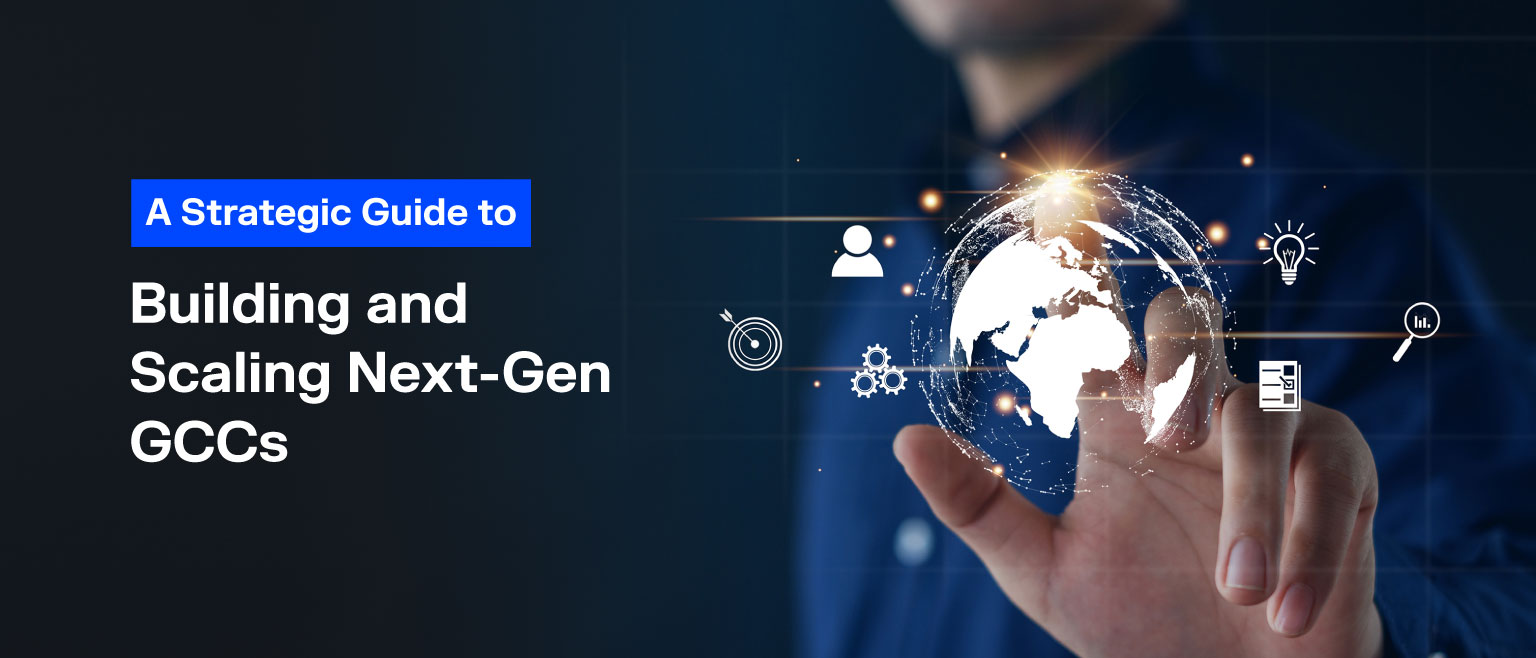Reimagining Talent: Why GCCs Must Build and Cultivate Their Workforce
Global Capability Centers (GCCs) are no longer mere cost-saving back offices — they’ve evolved into innovation nerve centers for global enterprises. India, with its deep technical talent and strategic time zone advantage, has emerged as the top choice for GCC companies seeking to expand. NASSCOM reports that the number of GCCs in India has surged to over 1,700 in FY2024, employing over 1.9 million people.
This rapid expansion might be exciting, but it highlights a big problem: a steady and widening talent gap, specifically in technologies like AI, machine learning, and data science.
Beyond just the growing number of GCCs, many individual centers are also significantly expanding their internal teams and capabilities. And with this expanding talent pool comes the significant challenge of effective talent management – ensuring these professionals are rotated into the right roles and given meaningful opportunities to stay engaged, motivated, and aligned with organizational goals.
It’s high time that we reimagine talent sourcing with a long-term, proactive, and ecosystem-driven approach, one that leverages robust apprenticeship programs, strengthens academia-industry collaboration, and understands right-skilling.
Apprenticeship Programs
Let’s start with apprenticeships. Apprenticeships, with their outcome-based and immersive model, are not just resume fillers like internships. Freshers gain practical experience in a structured way while also being mentored and trained.
According to the AICTE Skills Survey 2024, over 74% of tech graduates are not job-ready without additional training.
Apprenticeships address this issue effectively. The proactive approach of the apprenticeship model can help build organizational resilience and competitive advantage for the GCCs while drastically reducing time-to-competence and fostering loyalty.
Academia-Industry Collaboration
The disconnect between academic curricula and industry needs is not new. Universities and colleges give out graduates, but they lack the specific skills that are needed in an ever-evolving tech landscape. This is where strengthening academia-industry collaboration becomes significant.
Co-creating curriculum, sponsoring research and innovation labs, embedding real-world use cases in semester projects, and offering faculty immersion programs — these are just a few ways GCCs can step in.
More importantly, this isn’t CSR — it’s strategic foresight. A GCC that seeds its next-gen workforce through academia becomes talent-resilient and gains an edge in innovation cycles.
Right Skilling vs. Best Fit: The Need for a Talent Availability Model
A perfect-fit candidate with prominent experience and exposure, who also happens to be immediately available and within budget, probably doesn’t exist. And if they do, they’ve got five other offers!
Chasing the ideal, immediately deployable candidate is akin to an old ‘talent factory’ model: a belief that skilled professionals could be mass-produced and then simply dropped into any vacant role.
Instead of chasing unicorns, GCCs are shifting focus to the talent development model— an approach that maps future project needs against current skill supply and upskilling pathways. It’s a smart, data-backed way to build a workforce pipeline instead of constantly reacting to talent shortages.
The focus should move from “Can this person do the job today?” to “Can we nurture this person to do the job not just today but also simultaneously equip them to adapt to and leverage future technologies?”
Where Do We Go From Here?
Reimagining talent sourcing isn’t about a one-time shift. It’s a fundamental, transformative move — a move from traditional ways of transactional hiring to new and proactive talent building.
India is projected to host nearly 2,100-2,200 GCCs by 2030, creating 2.5-2.8 million jobs, according to a Zinnov-NASSCOM report.
But only if GCCs and partner ecosystems work together to resolve issues as a long-term solution.
GCCs that act now — with vision, data, and intent — won’t just stay relevant. They’ll lead.
Related Blogs
Industrial IoT and AI/ML: From Data Collection to Real-Time Decisions
Every industry, right now, is going through major changes due to the introduction of new technologies and innovation. And these innovations don’t just talk about making the process faster, but…
A Strategic Guide to Building and Scaling Next-Gen GCCs
The Global Capability Centre (GCC) model in India is undergoing its most significant transformation yet. Once primarily viewed through the lens of cost arbitrage, the Indian GCC is now transitioning…
Technology at the Core: Evolving at Lightning Speed, Staying True to the Basics
From a background in government advisory, policy formulation, and regulatory frameworks, one learns how policies shape industries and how the right regulations can accelerate innovation. These foundational principles of strategy,…





